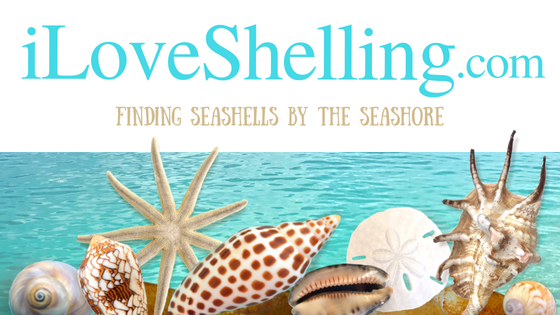Sanibel Islanders try education to fend off violations of shell rules
by MARK S KRZOS
April 18, 2010
Tourists traditionally flock to Sanibel’s unspoiled beaches for its treasure trove of sea shells.
Todd Reid, a small-business owner from Columbia City, Ind., did. And he wasn’t aware there were rules involved.
On April 2, Reid, 43, was doing the “Sanibel Stoop” — used to describe searchers hunched over looking for elusive seashells — near West Gulf Drive’s Casa Ybel Resort.
After receiving complaints of violations by the barrier island’s nature-loving residents, Sanibel police officers were sent out to investigate, said police Chief Bill Tomlinson.
When they arrived, they found Reid with about 60 shells, said Samantha Syoen, spokeswoman for the state attorney’s office in Fort Myers.
“Many of them were still alive and moving,” Syoen said. “He didn’t know it was a violation and said he had been doing it for three days.”
Reid is typical of so many visitors who don’t know that Sanibel and Lee County have laws making it illegal to take live shells. Punishment for violators is given sparingly and education is the priority.
Reid is one of five people who have been cited over the past four years by Sanibel police for violating a law outlawing the harvesting of live shells.
Violating the second- degree misdemeanor is punishable with a fine of up to $500 and a year in jail.
It almost never comes to that.
Reid did not return calls seeking comment and his attorney, Amira Fox, said neither she nor Reid would comment on the case.
Because Reid had no criminal record and was able to safely return some of the shells to the Gulf, he was not arrested.
“He was given a notice to appear,” said Syoen, adding that Reid was issued 67 citations. Instead of being charged and brought to trial, the state attorney’s office offered Reid a pre-trial diversion and he accepted it.
“As long as he stays out of trouble and completes the (supervised) program, this will all go away,” said Syoen.
Sanibel’s live shell harvesting law, which bans the harvest of any shells that contain a live organism except for oysters, hard clams, sunray venus clams and coquinas, took root in the late 1980s as an effort to protect more than 400 species of shell.
In 1993, the island petitioned the Marine Fisheries Commission for an outright ban. Two years later, the current rules were approved.
Jose Leal, the director of Sanibel’s Bailey-Matthews Shell Museum, said shells such as the lightning whelk and horse conch reproduce in local waters and the law was established to “prevent depletion of the local population.”
Those shells, Leal said, are not worth a lot of money here.
“For someone to make money off them, they’d have to collect a lot,” he said. “It could be different outside of the country where these shells are rare.”
Sanibel’s ban on harvesting live shells expanded throughout Lee County in 2002.
Since then, Sanibel police and the Florida Fish and Wildlife Conservation Commission have mostly been trying to educate the public about the little-known law.
Signs are posted on Sanibel’s beaches and literature about the law can be found in most hotel rooms.
Over the last four years, Sanibel police officers have issued 32 warnings to people seen collecting live shells either by residents or Sanibel’s beach patrol.
Citations for harvesting live shells is pretty rare, said Gary Morse, spokesman for FWC.
“We’ll maybe issue 10 a year. It’s tough to enforce because we have to observe someone taking them,” said Morse, adding that FWC officers are not patrolling beaches looking inside 5-year-olds’ beach pails for live shells.
The law can be confusing because it varies in counties throughout the state.
“Lee and Manatee counties, for example, are more restrictive than, say, Collier County’s,” Morse said.
Florida cities and counties can make laws like the live shell harvesting law more restrictive, but not more expansive, said Larry Justham, county court division chief for the state attorney’s office.
Issuing a warning or a citation is often up to the officer, said Tomlinson.
It often comes to what an officer determines is either an egregious violation versus someone who doesn’t know any better.
“It’s officer discretion on how they handle it,” Tomlinson said.
Lee and Collier county deputies haven’t written a citation in three years.
Bob Wagner, a Bonita Beach resident for 34 years, said he’s never seen anyone harvesting live shells on Bonita Beach.
“People here tend to rummage through all the stuff that’s already washed ashore,” he said.
During the winter and spring months when there’s often thousands of people shelling every day, Sanibel police rely on residents to report those appearing to harvest live shells.
“Most times our beach patrol will talk to people and educate them on the law and have them release the shells back in the water,” he said.
And that’s what happened to Katherine Hardin of St. Cloud on April 7.
“I had four kids with me, coolers, chairs, tents and as we were going to the beach, I wasn’t paying attention to the signs on the boardwalk. I was too busy herding everyone toward the beach,” she said.
Several hours later, on her way back from the beach, a police officer stopped Hardin and asked about a container she was carrying.
Inside were two live shells she was going to place in a saltwater aquarium back home.
“The police officer was really nice about it. She explained the law and said it was pretty serious,” Hardin said. “So I had the kids take the shells back to the beach and put them back in the ocean. It was a good education. When we went back to the beach the next day, we told others we saw that they better not do that.”
